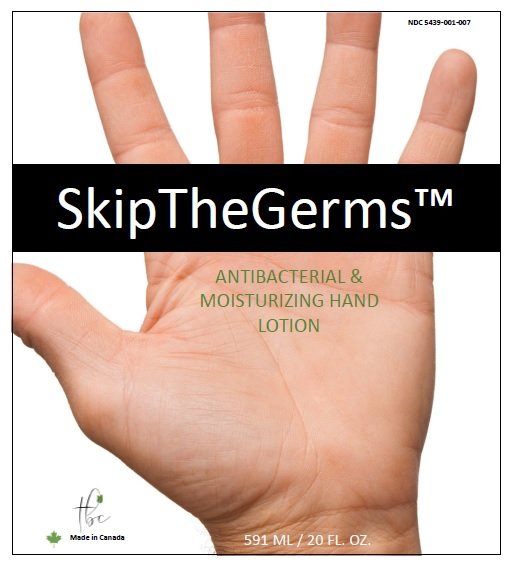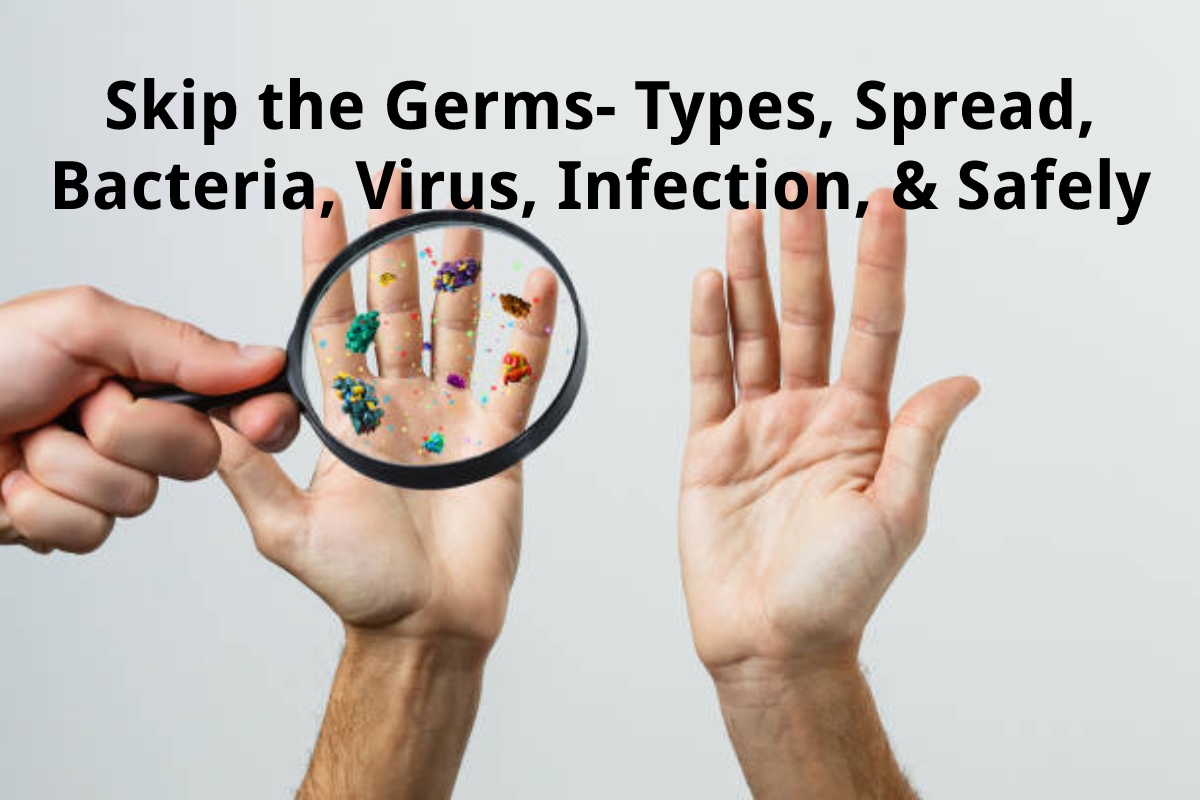Skip The Germs: Stay Safe And Healthy With These Proven Tips
You’ve probably heard it a million times—germs are everywhere. But do you really know how to skip the germs in your everyday life? Whether you're at work, school, or just running errands, germs can be lurking in places you least expect. So, how do you stay safe and healthy without going full germaphobe? That’s what we’re diving into today, folks.
This isn’t just another "wash your hands" article. We’re going deep into the science of germ avoidance, practical strategies, and expert advice to help you live a healthier life. Let’s face it, skipping germs isn’t just about cleanliness—it’s about being proactive and taking control of your health. And who doesn’t want that?
Whether you're dealing with flu season, navigating crowded spaces, or just trying to keep your home clean, this guide will give you the tools you need to stay ahead of those pesky germs. So, buckle up, because we’re about to drop some knowledge bombs that could change your life!
Read also:Is Cool Shirtz Ethical A Deep Dive Into The World Of Trendy Fashion And Morality
Why Skipping Germs Matters More Than Ever
In today’s fast-paced world, where we’re constantly exposed to new environments and people, skipping germs isn’t just a preference—it’s a necessity. From public transportation to shared office spaces, germs can spread faster than you can say "hand sanitizer." And with the rise of antibiotic-resistant bacteria, it’s more important than ever to take preventive measures.
But here’s the kicker: skipping germs isn’t just about avoiding illness. It’s about boosting your overall well-being. When you’re not constantly battling colds or infections, you have more energy to focus on the things that matter—like crushing your goals and living your best life.
Understanding the Germ Landscape
Before we dive into how to skip the germs, let’s talk about what we’re up against. Germs come in all shapes and sizes, from bacteria to viruses, fungi, and even parasites. Some are harmless, while others can make you seriously sick. The good news? Most germs can be avoided with a little knowledge and effort.
Common Germ Hotspots You Need to Know
Here’s a quick rundown of the places where germs love to hang out:
- Public restrooms (duh!)
- Door handles and elevator buttons
- ATMs and vending machines
- Grocery carts and shopping baskets
- Shared office equipment like keyboards and phones
Now that we’ve identified the enemy’s favorite hangouts, let’s talk about how to beat them at their own game.
Top Strategies to Skip the Germs
Skipping germs doesn’t have to be complicated. With a few simple strategies, you can significantly reduce your risk of exposure. Here are some of the best tips from health experts:
Read also:Gary Drayton Net Worth Unveiling The Hidden Riches Of A Legendary Comic Artist
1. Wash Your Hands Like a Pro
Handwashing is one of the most effective ways to skip the germs. But not all handwashing is created equal. To do it right, follow these steps:
- Wet your hands with clean, running water.
- Apply soap and lather for at least 20 seconds (sing "Happy Birthday" twice if you need a timer).
- Don’t forget the backs of your hands, between your fingers, and under your nails.
- Rinse thoroughly and dry with a clean towel or air dryer.
2. Sanitize When You Can’t Wash
Let’s face it—sometimes you don’t have access to soap and water. That’s where hand sanitizer comes in. Look for one with at least 60% alcohol content and use it generously, especially after touching high-touch surfaces.
3. Keep Your Space Clean
Your home and workspace should be your safe zones. Regularly clean and disinfect frequently touched surfaces like countertops, doorknobs, and electronics. A little elbow grease goes a long way in keeping germs at bay.
The Science Behind Germ Transmission
If you want to truly skip the germs, it helps to understand how they spread. Germs can travel through:
- Airborne droplets (coughing, sneezing)
- Direct contact (shaking hands, hugging)
- Indirect contact (touching contaminated surfaces)
- Contaminated food or water
Knowing these pathways can help you identify potential risks and take appropriate precautions. For example, if someone near you is coughing or sneezing, it might be wise to keep your distance or wear a mask.
Boosting Your Immune System to Fight Off Germs
Even the best germ-skipping strategies can’t guarantee 100% protection. That’s why it’s crucial to strengthen your immune system. Here’s how:
1. Eat a Balanced Diet
Fuel your body with nutrient-rich foods like fruits, vegetables, lean proteins, and whole grains. These provide the vitamins and minerals your immune system needs to function properly.
2. Get Enough Sleep
Sleep is when your body repairs itself and strengthens its defenses. Aim for 7-9 hours of quality sleep per night.
3. Stay Active
Regular exercise boosts circulation and helps your immune cells move more efficiently through your body. Plus, it reduces stress, which can weaken your immune system.
Common Myths About Germs
There’s a lot of misinformation out there about germs. Let’s debunk some of the most common myths:
Myth 1: Cold Weather Causes Colds
While cold weather can dry out your nasal passages, making you more susceptible to infections, it doesn’t directly cause colds. Viruses are the real culprits.
Myth 2: Hand Dryers Kill Germs
Hand dryers can actually spread germs by blowing them into the air. Stick to paper towels or air dryers with HEPA filters for better hygiene.
Myth 3: Antibacterial Soap is Always Better
Regular soap is just as effective at removing germs, and overuse of antibacterial products can contribute to antibiotic resistance.
How to Stay Germ-Free While Traveling
Traveling can expose you to all kinds of new germs, but it doesn’t have to be a recipe for disaster. Here are some tips for staying healthy on the go:
1. Pack a Portable Sanitizer Kit
Include hand sanitizer, disinfectant wipes, and a face mask in your carry-on. These items can help you stay germ-free in airports, hotels, and other high-traffic areas.
2. Choose Your Seat Wisely
If possible, sit near a window on airplanes. Studies show that window seats have less exposure to germs than aisle or middle seats.
3. Avoid Touching Your Face
Your hands can pick up germs from surfaces, so avoid touching your eyes, nose, and mouth while traveling.
Expert Advice on Skipping Germs
We reached out to Dr. Emily Carter, a leading infectious disease specialist, for her top tips on germ avoidance:
"The key to skipping germs is consistency. Washing your hands regularly, staying up-to-date on vaccinations, and maintaining a healthy lifestyle are all essential. Remember, germs are invisible, so don’t assume you’re safe just because you can’t see them."
Dr. Carter also emphasizes the importance of education. "The more you know about germs and how they spread, the better equipped you are to protect yourself and others."
Final Thoughts: Take Action and Stay Healthy
Skipping germs isn’t about living in a bubble—it’s about making smart choices that keep you healthy and happy. By following the tips and strategies outlined in this article, you can significantly reduce your risk of exposure and boost your overall well-being.
So, what are you waiting for? Start implementing these practices today and encourage your friends and family to do the same. Together, we can create a healthier, germ-free world.
And remember, if you found this article helpful, don’t forget to share it with others. Knowledge is power, and staying healthy is a team effort!
Table of Contents
- Why Skipping Germs Matters More Than Ever
- Understanding the Germ Landscape
- Top Strategies to Skip the Germs
- The Science Behind Germ Transmission
- Boosting Your Immune System to Fight Off Germs
- Common Myths About Germs
- How to Stay Germ-Free While Traveling
- Expert Advice on Skipping Germs
- Final Thoughts: Take Action and Stay Healthy



